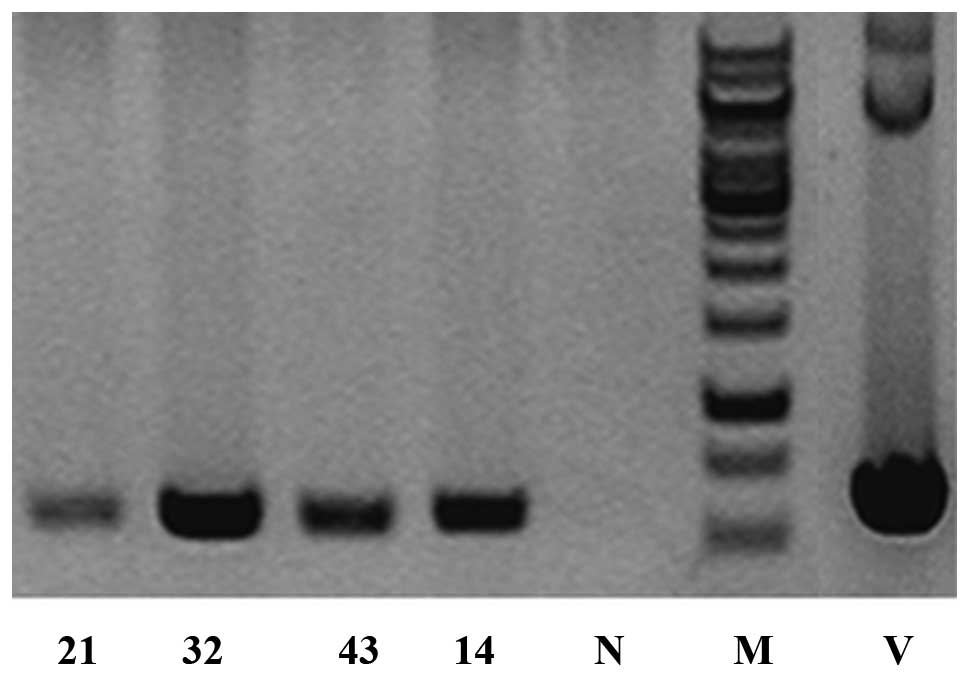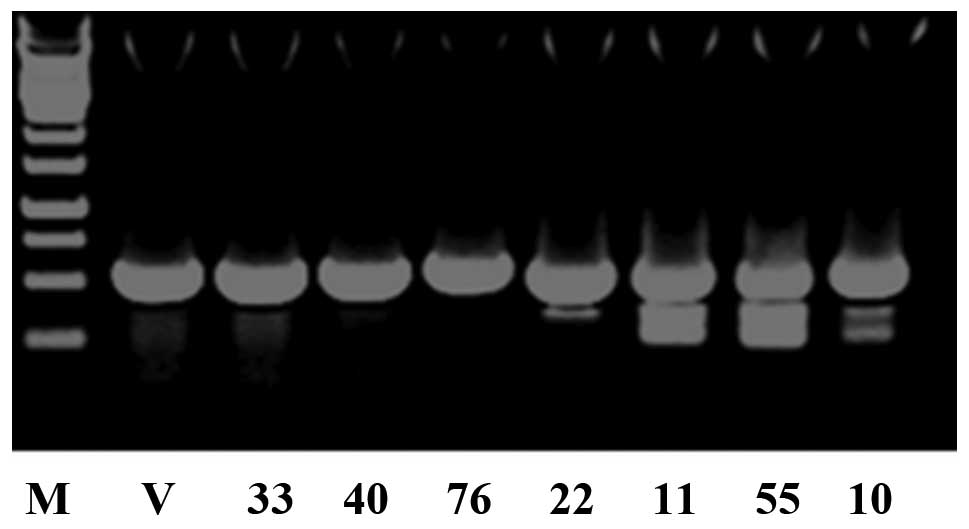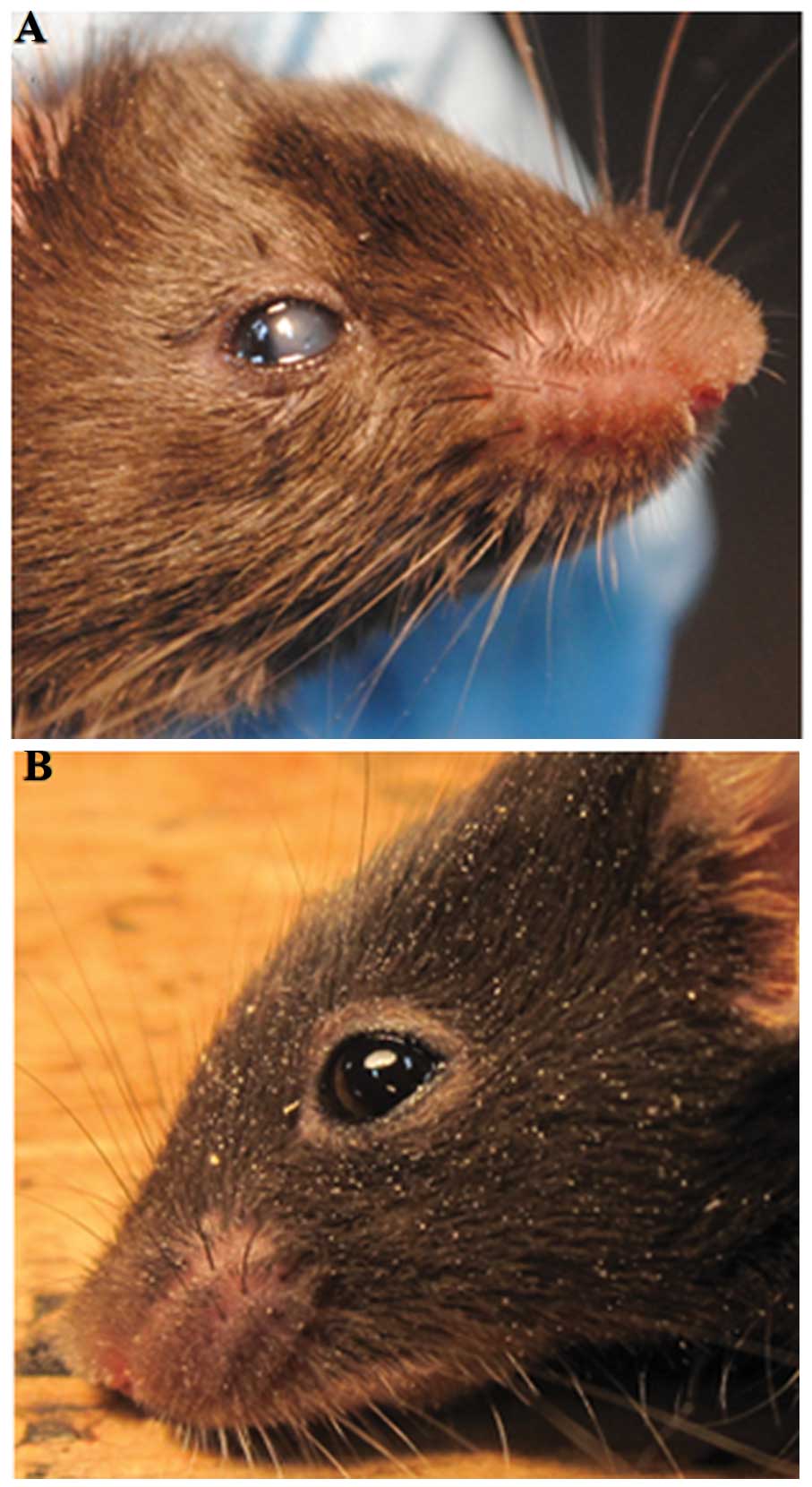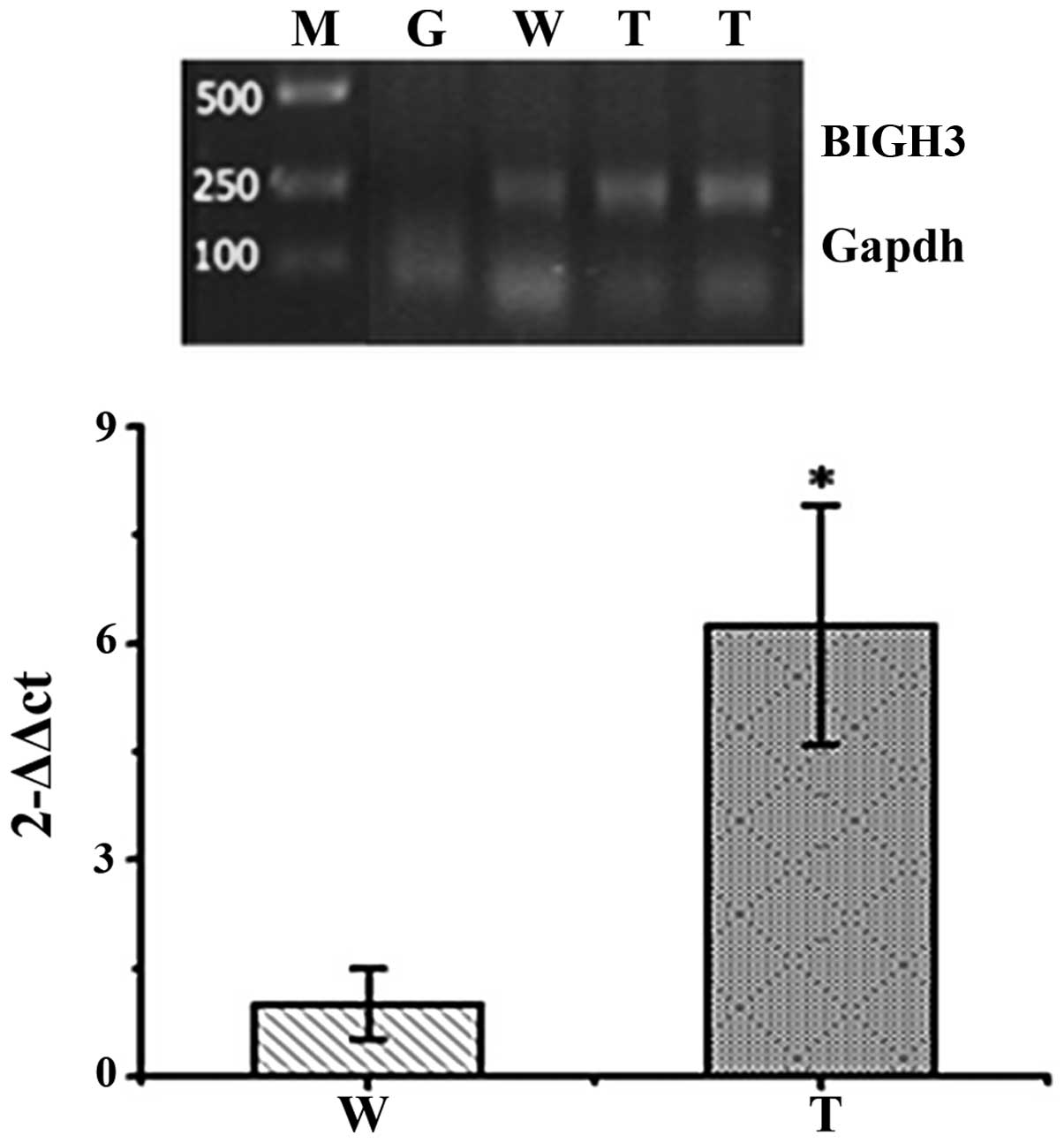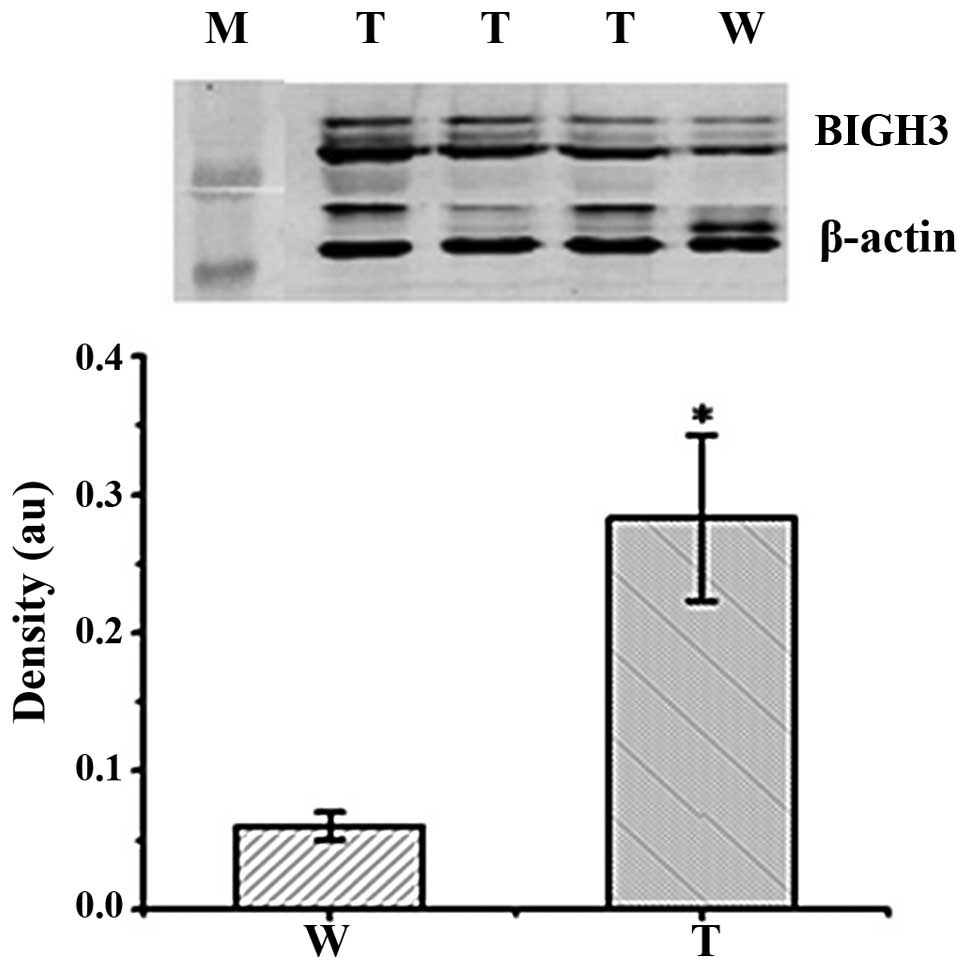|
1
|
Eiberg H, Moller HU, Berendt I and Mohr J:
Assignment of granular corneal dystrophy Groenouw type I (CDGG1) to
chromosome 5q. Eur J Hum Genet. 2:132–138. 1994.PubMed/NCBI
|
|
2
|
Yu P, Gu Y, Yang Y, et al: A clinical and
molecular-genetic analysis of Chinese patients with lattice corneal
dystrophy and novel Thr538Pro mutation in the TGFBI (BIGH3) gene. J
Genet. 85:73–76. 2006. View Article : Google Scholar : PubMed/NCBI
|
|
3
|
Paliwal P, Sharma A, Tandon R, et al:
TGFBI mutation screening and genotype-phenotype correlation in
north Indian patients with corneal dystrophies. Mol Vis.
16:1429–1438. 2010.PubMed/NCBI
|
|
4
|
Vincent AL, de Karolyi B, Patel DV, et al:
TGFBI mutational analysis in a New Zealand population of inherited
corneal dystrophy patients. Br J Ophthalmol. 94:836–842. 2010.
View Article : Google Scholar : PubMed/NCBI
|
|
5
|
Korvatska E, Munier FL, Djemai A, et al:
Mutation hot spots in 5q31-linked corneal dystrophies. Am J Hum
Genet. 62:320–324. 1998. View
Article : Google Scholar : PubMed/NCBI
|
|
6
|
Skonier J, Bennett K, Rothwell V, et al:
Beta-igh3: a transforming growth factor-beta responsive gene
encoding a secreted protein that inhibits cell attachment in vitro
and suppresses the growth of CHO cells in nude mice. DNA Cell Biol.
13:571–584. 1994. View Article : Google Scholar : PubMed/NCBI
|
|
7
|
Grunauer-Kloevekorn C, Braeutigam S,
Weidle E, et al: Molecular genetic and histopathological
examinations for genotype-phenotype analysis in patients with
TGFBI-linked corneal dystrophy. Klin Monbl Augenheilkd.
223:829–836. 2006.(In German).
|
|
8
|
Kannabiran C and Klintworth GK: TGFBI gene
mutations in corneal dystrophies. Hum Mutat. 27:615–625. 2006.
View Article : Google Scholar : PubMed/NCBI
|
|
9
|
Patel DA, Chang SH, Harocopos GJ, et al:
Granular and lattice deposits in corneal dystrophy caused by R124C
mutation of TGFBIp. Cornea. 11:1215–1222. 2010. View Article : Google Scholar : PubMed/NCBI
|
|
10
|
Gruenauer-Kloevekorn C, Clausen I, Weidle
E, et al: TGFBI (BIGH3) gene mutations in German families: two
novel mutations associated with unique clinical and
histopathological findings. Br J Ophthalmol. 93:932–937. 2009.
View Article : Google Scholar : PubMed/NCBI
|
|
11
|
Grunauer-Kloevekorn C, Brautigam S,
Wolter-Roessler M, et al: Molecular genetic analysis of the BIGH3
gene in lattice type I (Biber-Haab-Dimmer) and granular type II
(Avellino) corneal dystrophy: is indirect mutation analysis for hot
spots recommended? Klin Monbl Augenheilkd. 222:1017–1023. 2005.(In
German).
|
|
12
|
Munier FL, Korvatska E, Djemai A, et al:
Kerato-epithelin mutations in four 5q31- linked corneal
dystrophies. Nat Genet. 15:247–251. 1997. View Article : Google Scholar : PubMed/NCBI
|
|
13
|
Kim JE, Han MS, Bae YC, et al: Anterior
segment dysgenesis after overexpression of transforming growth
factor-beta-induced gene, beta igh3, in the mouse eye. Mol Vis.
13:1942–1952. 2007.PubMed/NCBI
|
|
14
|
Bustamante M, Tasinato A, Maurer F, et al:
Overexpression of a mutant form of TGFBI/BIGH3 induces retinal
degeneration in transgenic mice. Mol Vis. 14:1129–1137.
2008.PubMed/NCBI
|
|
15
|
Pey AL, Mesa-Torres N, Chiarelli LR and
Valentini G: Structural and energetic basis of protein kinetic
destabilization in human phosphoglycerate kinase 1 deficiency.
Biochemistry. 52:1160–1170. 2013. View Article : Google Scholar : PubMed/NCBI
|
|
16
|
Schay G, Herenyi L, Fidy J and Osvath S:
Role of domain interactions in the collective motion of
phosphoglycerate kinase. Biophys J. 104:677–682. 2013. View Article : Google Scholar : PubMed/NCBI
|
|
17
|
Lei Y and Liu YG: Isolation, sequence
identification and tissue expression profile of a novel sheep
gene-PGK1. Res J Biotechnol. 8:38–41. 2013.
|
|
18
|
Singer-Sam J, Keith DH, Tani K, et al:
Sequence of the promoter region of the gene for human X-linked
3-phosphoglycerate kinase. Gene. 32:409–417. 1984. View Article : Google Scholar : PubMed/NCBI
|
|
19
|
Takada T, Lida K, Awaji T, et al:
Selective production of transgenic mice using green fluorescent
protein as a marker. Nat Biotechnol. 15:458–461. 1997. View Article : Google Scholar : PubMed/NCBI
|
|
20
|
Mizuguchi H, Xu Z, Ishii-Watabe A, et al:
IRES-dependent second gene expression is significantly lower than
cap-dependent first gene expression in a bicistronic vector. Mol
Ther. 1:376–382. 2000. View Article : Google Scholar : PubMed/NCBI
|
|
21
|
Borman AM, Bailly JL, Girard M and Kean
KM: Picornavirus internal ribosome entry segments: comparison of
translation efficiency and the requirements for optimal internal
initiation of translation in vitro. Nucleic Acids Res.
23:3656–3663. 1995. View Article : Google Scholar
|
|
22
|
Cao HQ and Ding JF: Construction strategy
of polygene co-expression vectors. Foreign Med Sci (Molecular
Biology Section). 24:1–4. 2000.
|



